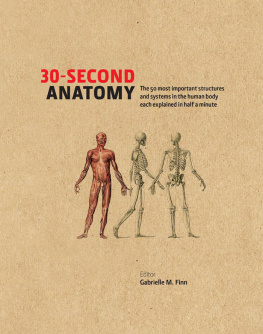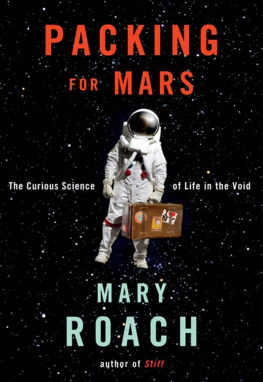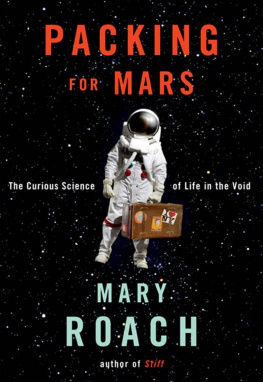That is utopia especially for primitives and scientists, which is to say everybody.
Kim Stanley Robinson, Red Mars
This project was supported by the National Aeronautics and Space Administration under Grant Number NNX15AI31G.
The stories and essays in this report reflect the views of its authors, and do not necessarily represent the views of the National Aeronautics and Space Administration or the United States Government.
Visions, Ventures, Escape Velocities: A Collection of Space Futures.
Copyright 2017 Ed Finn and Joey Eschrich
The copyrights for all illustrations, including the cover image, are owned by Maciej Rebisz.
The copyrights for individual short stories and essays are owned by their respective authors, as follows:
Editors Introduction: The Flag and the Garden by Ed Finn and Joey Eschrich. Copyright Ed Finn and Joey Eschrich.
Human Exploration of Mars: Fact from Fiction? by Jim Bell. Copyright 2017 Jim Bell.
Vanguard 2.0 by Carter Scholz. Copyright 2017 Carter Scholz.
Reflections on the Dual Uses of Space Innovation by G. Pascal Zachary. Copyright 2017 G. Pascal Zachary.
Mozart on the Kalahari by Steven Barnes. Copyright 2017 Steven Barnes.
Past Empires and the Future of Colonization in Low Earth Orbit by William K. Storey. Copyright 2017 William K. Storey
Expanding Our Solution Space: How We Can Build an Inclusive Future by Deji Bryce Olukotun. Copyright 2017 Deji Bryce Olukotun.
The Baker of Mars by Karl Schroeder. Copyright 2017 Karl Schroeder.
Exploration Fact and Exploration Fiction by Lawrence Dritsas. Copyright 2017 Lawrence Dritsas.
Death on Mars by Madeline Ashby. Copyright 2017 Madeline Malan.
Life on Mars? by Steve Ruff. Copyright 2017 Steve Ruff.
The Use of Things by Ramez Naam. Copyright 2017 Ramez Naam.
Toward Asteroid Exploration by Roland Lehoucq. Copyright 2017 Roland Lehoucq.
Night Shift by Eileen Gunn. Copyright 2017 Eileen Gunn.
Rethinking Risk by Andrew Maynard. Copyright 2017 Andrew Maynard.
Shikasta by Vandana Singh. Copyright 2017 Vandana Singh.
The New Science of Astrobiology by Sara Imari Walker. Copyright 2017 Sara Imari Walker.
Negotiating the Values of Space Exploration by Emma Frow. Copyright 2017 Emma Frow.
The Luxury Problem: Space Exploration in the Emergency Century by Kim Stanley Robinson and Jim Bell. Copyright 2017 Kim Stanley Robinson and Jim Bell.
The Economics of Space by Clark A. Miller. Copyright 2017 Clark Miller.
High Hedonistic and Low Fatalistic by Linda T. Elkins-Tanton. Copyright 2017 Linda T. Elkins-Tanton.
ISBN 978-0-9995902-1-8
Planet section break icons designed by Nook Fulloption, distributed by The Noun Project. Used under a Creative Commons CC-BY 4.0 license. Learn more and download the icons at https://thenounproject.com/term/planet/854251.

Credits
Editors
Ed Finn
Joey Eschrich
Guest Editor
Juliet Ulman, http://papertyger.net
Project Leaders
Ed Finn
Ruth Wylie
Jim Bell
Clark A. Miller
Illustrations
Maciej Rebisz, http://maciejrebisz.com
Ebook Design
Emily Buckell,
Cover, PDF, and Print Design
Mark Dudlik, http://markdudlik.com
Research Assistants
Alissa Haddaji
Mateo Pimentel
Special Thanks
To Kim Stanley Robinson, for allowing us to use excerpts from his magisterial novel Red Mars throughout this volume, and for making himself available for a fascinating and thought-provoking interview.
A Note on the Epigraphs
We are pleased to pay homage to Kim Stanley Robinsons visionary 1992 novel Red Mars on its 25th anniversary. Throughout this volume, at the beginning of each section, you will encounter a brief excerpt from Red Mars, the first in Robinsons Mars Trilogy, which traces the process of terraforming the Red Planet over 200 years. Robinsons resolutely utopian, deeply researched stories about human space exploration and settlement are animated by compelling characters and thought-provoking conflicts over values and politics. They also contain moments of arresting beauty and human connection. For all these reasons, Robinsons visions of the future remain a major source of inspiration for the stories and essays in this volume. Beyond that, they have helped to shape our broader cultural imaginary for human endeavors in space, both in science fiction and technical communities. We are proud to have Red Mars serve as a frame for our work here, and we hope that our readers will seek out Robinsons entire oeuvre, which encompasses a number of human journeys into space.
An interview with Robinson and Jim Bell appears at the end of this collection, in the Concluding Thoughts section.
Acknowledgments
The stories in this volume are not predictions. None of us know how space exploration, space technologies, and the commercialization of space will play out. Engineers and leaders at NASA and in companies like SpaceX may have clear ideas of whats possible, and whats desirable from their standpoint, but not even they know how these technologies will play out in practice, as real people in real organizations put them to work to create a future in space for all of us. In that sense, William K. Storey is exactly right in his essay. If we read these stories critically, we ultimately probably learn far more about ourselves, our societies, and our anxieties today, than we do about how the future of humans and robots in space will play out.
In the end, though, we are less interested in a critical deconstruction of how the stories were written and why they took the exact form that they did. We are much more interested in whether they stimulate creative, interesting, and relevant thoughts and conversations among their readers. And we are interested in whether those thoughts and conversations can help inform NASA and commercial space companies, other national space agencies, Congress, the people of the United States, and the people of the world, as we work our collective ways toward the creation of new possibilities and new worlds. This book is not the end of the experiment. It is the beginning.
Ed Finn:
I am deeply grateful to the many people who made this experiment possible. The thread begins with Mason Peck, who first invited us to propose a workshop on the relationship between popular imagination and technical possibilities. That incredibly generative gatheringtoo heavily populated with wonderful colleagues to list them all hereinspired this project as well as related work on the feedback loop between science and science fiction. The story continues with our colleagues at NASA, Alexander MacDonald, Zachary Pirtle, and Jacob Keaton, who originally supported our proposal for narrative space futures, as well as Ashley Edwards, who helped us shepherd this book out into the world.
As the work got underway a small army of collaborators from ASU and beyond took a shoulder to this wheel. Clark Miller, Jim Bell, and Ruth Wylie have been wonderful collaborators and co-investigators for this effort. Alissa Haddaji and Mateo Pimentel have bookended the project as graduate research assistants and, respectively, fomented and documented our strange collaborations. Bob Beard, Cody Staats, and the whole team at the Center for Science and the Imagination helped orchestrate our on-site workshop and engage Maciej Rebisz, who deserves his own thank-you for creating the stunning illustrations that accompany these stories. Juliet Ulman played a vital role in editing the manuscript as we moved into the final stretch of the project. Beyond all of these, Joey Eschrich deserves an editorial medal of valor for his work managing, editing, coordinating, and improving this collection in every way imaginable.
Next page













